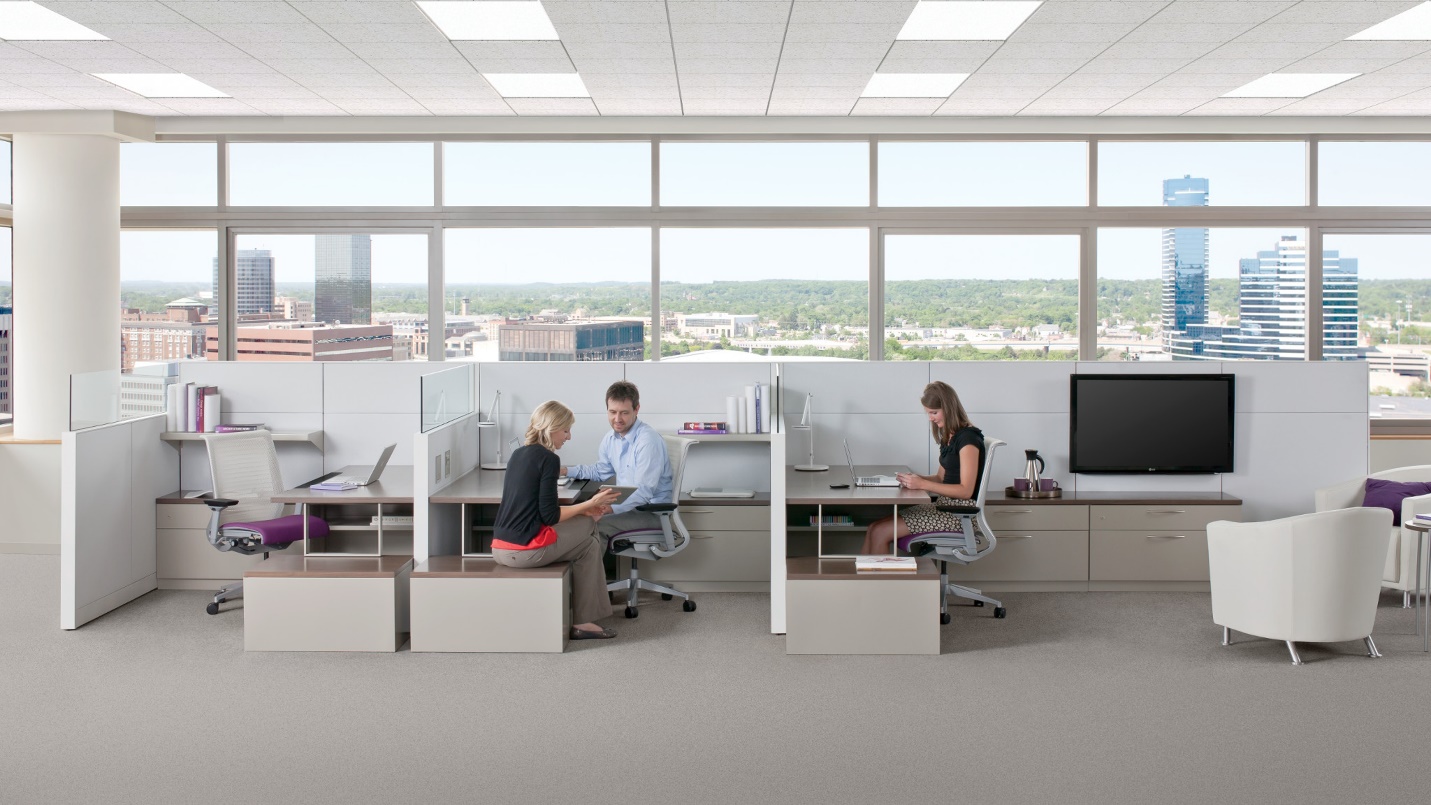The majority of offices have adopted the concept of cubicles, which are partially encircled workspaces that are separated from neighboring ones by partitions. Initially, their purpose was to isolate employees from sights and noises of an open workspace. Later, they started promoting interactions among employees. Even though the idea behind this architectural structure sounds great, it tends to have a negative effect on office acoustics.
These environments are associated with being stressed out, distracted, and deprived of privacy. Above all these, the biggest complaints of an open-space: workers relate to hearing, and to being heard, which also leads to wasting more time.
Good office acoustics is a key to better work performance and well-being of the employees in the workplace. According to U.S. General Services Administration “Acoustical comfort is achieved when the workplace provides appropriate acoustical support for interaction, confidentiality, and concentrative work.”
RELATED: Consider Commercial Office Sound Masking Systems to improve Speech Comfort
Open Office Acoustics Design Principles
How can you achieve desired comfort in a cubicle? There are three major types of changes that your office can implement to improve the acoustic environment:
Noisy Office Behavior – Options to reduce Noise Complaints
Changing the patterns of behavior might be the first step towards better office experience. Identifying the right balance of concentration and interaction among the workers is crucial as well as developing working protocols. You should have special guidelines for all employees: zones to print, voice levels, and spaces for communications or breaks. Introducing technology-based devices for employee interaction can also help to reduce noise levels within the office.
Behavior is easily affected by dedicating break-out areas for phone calls and meetings, minimizing impromptu get-togethers in the center of the office. Likewise, having activity areas encourages employees to get together in designated locations where they’re less likely to disrupt coworkers.
Office Layout to Minimize Noise Issues
Zoning (layout strategy), planning, and furniture are key elements to consider when thinking about solutions for office acoustics. You need to locate different office “functions” separate from each other. For example, conference rooms should be far from a copier room. Plan supporting facilities such as coffee bars with consideration to the location of the workstations. Moreover, select furniture that satisfies acoustical standards and helps muffling the noises.
A common issue we face is when customer service or technical support are placed close to a sales area. Often-times sales associates are engaging with clients, and need to be animated and upbeat. Meanwhile, other support functions need to retain a level of acoustic clarity, but at a lower volume. When possible, pair similar work areas to minimize volume fluctuations.

Acoustic Treatments for Open Offices
Two major ideas for improvement are sound absorbing materials on the ceilings, walls, and floors, as well as sound masking systems for open offices. Some special methods for noise absorption would be: acoustic ceiling tiles, carpeting, furniture finishes, curtains, and acoustical plasters. The more absorptive material you add to the open space, the quieter the environment will become.
Some of the sound masking solutions include ceiling based applications, desktop systems, or even apps for your smartphone or laptop. Sound masking systems can be installed above the Acoustic Ceiling grid to provide speech privacy without affecting the aesthetics below.
Another tip is to always look at the STC (Sound Transmission Class) of the products, as there are some minimum requirements for office spaces. The minimum level of STC required in normal speech privacy is 40.
If the first step is easiest to implement, then for the acoustic design and treatment solutions you will require some specialist knowledge. Commercial Acoustics is willing to help you solve the problem of open space office environment. Check our sound absorbing products here. We would be also glad to offer you personalized consultation if needed.
How to Improve Open Office Acoustics and Reduce Office Noise
While open office spaces filled with cubicles were designed to make the work environment better, they have some downsides. In order to try and combat the poor office acoustics that come from this type of office layout try the methods we have laid out above:
- Try to reduce noisy office behavior amongst employees
- Layout the office so loud rooms such as the copy room are located away from conference rooms
- Acoustically treat the office with sound masking or sound absorbing panels



